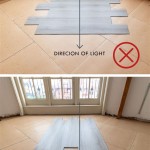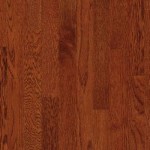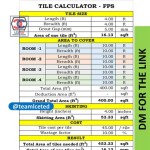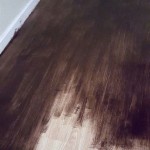Grades of White Oak Flooring: A Comprehensive Guide
White oak flooring is a popular choice for homeowners and builders due to its durability, versatility, and attractive grain patterns. However, one crucial aspect often overlooked is the grading system used to classify the lumber. Understanding these grades is essential for selecting the right flooring for a specific project, ensuring the desired aesthetic and performance characteristics are met. The grading system is based on the number, size, and type of natural characteristics present in the wood, such as knots, mineral streaks, and color variations. These features contribute to the unique character of each plank and ultimately influence the overall appearance and price of the flooring.
The National Oak Flooring Manufacturers Association (NOFMA) established the standards for grading white oak and other hardwood flooring. While NOFMA is a key influence, individual manufacturers may also implement their own internal grading systems, which can sometimes deviate slightly from the established norms. Therefore, direct consultation with the manufacturer is always recommended to clarify their specific grading criteria and ensure a clear understanding of what to expect from each grade.
The grading process is subjective to a degree, relying on trained professionals to assess the boards based on visual inspection. Factors considered include the presence and size of knots (both open and closed), the degree of color variation, the presence of mineral streaks or other discoloration, the straightness of the grain, and the overall clarity of the wood. Each grade represents a different level of uniformity and natural character, catering to a variety of aesthetic preferences and budgetary constraints. Understanding the nuances of each grade will empower informed decisions regarding the investment in white oak flooring.
The following sections will delve into the common grades of white oak flooring, outlining their defining characteristics and typical applications. This information will assist in navigating the selection process and achieving the desired look and feel for any space.
Understanding the Primary Grades of White Oak Flooring
White oak flooring, like other hardwood species, is generally classified into several grades, each representing a different level of quality and aesthetic. The primary grades commonly encountered are Clear, Select & Better, No. 1 Common, and No. 2 Common (also sometimes referred to as Rustic grade). Each grade possesses distinct characteristics related to the presence of knots, mineral streaks, color variations, and other natural features. These features do not necessarily indicate defects in the wood's structural integrity, but rather contribute to the unique character and visual appeal of each grade.
Clear Grade: This grade represents the highest quality of white oak flooring. Clear grade boards are characterized by their minimal imperfections and a consistent, uniform appearance. They are virtually free of knots, mineral streaks, and significant color variations. This grade typically showcases the clean, natural beauty of the wood with a smooth, unblemished surface. Clear grade flooring is often selected for formal spaces or where a sophisticated, contemporary look is desired.
Due to its scarcity, Clear grade white oak flooring is generally the most expensive option. The demand for this grade is higher because it offers a consistent and refined appearance. The rarity stems from the fact that only a small percentage of harvested timber meets the stringent requirements for Clear grade classification. The selection process involves careful inspection and meticulous culling of boards that exhibit any noticeable imperfections.
Applications for Clear grade flooring include high-end residential properties, commercial spaces with a focus on elegance, and architectural designs that emphasize clean lines and minimalist aesthetics. The uniformity of the flooring creates a sense of spaciousness and sophistication, enhancing the overall ambiance of the environment. However, it is important to note that even within Clear grade, slight variations in color and grain patterns may occur due to the natural characteristics of the wood.
Select & Better Grade: This grade is a step down from Clear grade but still considered a premium option. Select & Better grade white oak flooring allows for slight imperfections, such as small, tight knots and minor color variations. These features add a touch of character to the flooring while maintaining a relatively uniform and refined appearance. The "Better" designation indicates that boards may be even cleaner than standard Select grade, further minimizing imperfections.
Select & Better grade strikes a balance between quality and affordability, making it a popular choice for a wide range of applications. It offers a more natural look than Clear grade while still maintaining a relatively consistent appearance. The subtle imperfections contribute to the overall warmth and charm of the flooring, without detracting from its elegance.
This grade is suitable for both residential and commercial spaces, providing a versatile option that complements various design styles. It is commonly used in living rooms, dining rooms, bedrooms, and offices. The slight variations in color and grain pattern can add visual interest to the space, creating a welcoming and inviting atmosphere. While Select & Better grade allows for some imperfections, the overall quality remains high, ensuring durability and long-lasting performance.
No. 1 Common Grade: This grade, also known as "Character Grade" by some manufacturers, displays more natural character than Clear or Select & Better grades. No. 1 Common white oak flooring features larger knots, mineral streaks, and more pronounced color variations. These features contribute to a rustic and informal aesthetic. While the imperfections are more prominent, the wood still possesses structural integrity and offers a durable flooring option.
No. 1 Common grade is often preferred for projects where a natural and authentic look is desired. The knots and mineral streaks add visual interest and create a sense of warmth and charm. This grade is particularly well-suited for farmhouse-style homes, cabins, and other rustic-themed spaces. It also appeals to individuals who appreciate the unique character of wood and embrace its natural imperfections.
The price point of No. 1 Common grade is typically lower than that of Clear or Select & Better grades, making it a more budget-friendly option. However, it is important to carefully inspect the boards before installation to ensure that the imperfections are aesthetically pleasing and do not compromise the structural integrity of the flooring. Some boards may require trimming or careful placement to achieve the desired look.
No. 2 Common Grade: This grade, sometimes referred to as "Rustic Grade," represents the most rustic and character-filled option. No. 2 Common white oak flooring contains a significant number of knots, mineral streaks, and pronounced color variations. Open knots, cracks, and other imperfections are more prevalent in this grade. While these features contribute to a unique and aged appearance, they may also require more patching or filling during installation.
No. 2 Common grade is ideal for projects where a reclaimed or distressed look is desired. The imperfections add a sense of history and authenticity to the flooring, creating a truly unique and characterful space. This grade is often used in restaurants, bars, and other commercial settings where a rustic and informal ambiance is desired.
It is important to note that No. 2 Common grade may require more maintenance than higher grades due to the presence of open knots and cracks. Regular cleaning and sealing are essential to prevent dirt and moisture from accumulating in these imperfections. Despite the increased maintenance requirements, this grade offers a distinctive and visually appealing flooring option for those who appreciate the beauty of natural imperfections.
Factors Influencing Grade Selection
Several factors influence the choice of white oak flooring grade, including the desired aesthetic, budget, and the intended use of the space. Selecting the appropriate grade requires careful consideration of these factors to ensure that the flooring meets the specific needs and expectations of the project.
Aesthetic Preferences: The desired aesthetic is a primary consideration when selecting a flooring grade. Clear grade offers a clean and uniform appearance, suitable for formal and contemporary spaces. Select & Better grade provides a balance of quality and character, complementing a variety of design styles. No. 1 Common and No. 2 Common grades offer a rustic and informal look, ideal for farmhouse-style homes and commercial spaces aiming for a distressed or reclaimed aesthetic. The choice depends on personal preferences and the overall design concept of the space.
Budget Constraints: Budgetary constraints often play a significant role in the decision-making process. Clear grade is generally the most expensive option, followed by Select & Better grade. No. 1 Common and No. 2 Common grades are typically more affordable, allowing for cost savings without sacrificing durability. It is important to consider the long-term value of the flooring and choose a grade that fits within the budget while still meeting the desired aesthetic and performance requirements.
Intended Use of the Space: The intended use of the space also influences the selection of flooring grade. High-traffic areas, such as hallways and kitchens, may benefit from a more durable grade with fewer imperfections, such as Clear or Select & Better. Lower-traffic areas, such as bedrooms, may be suitable for No. 1 Common or No. 2 Common grades, where the emphasis is on aesthetic appeal rather than durability. The specific requirements of the space should be considered to ensure that the flooring can withstand the expected wear and tear.
Manufacturer Variations and Considerations
While NOFMA provides a general framework for grading white oak flooring, individual manufacturers may implement their own internal grading systems that can deviate slightly from the established norms. These variations can include differences in the allowable size and number of knots, the acceptable range of color variations, and the presence of other natural features. Therefore, it is crucial to consult directly with the manufacturer to understand their specific grading criteria and expectations.
Furthermore, the origin of the wood and the manufacturing process can also influence the quality and appearance of the flooring. White oak sourced from different regions may exhibit variations in color, grain pattern, and density. Similarly, different manufacturing techniques, such as kiln-drying and milling, can affect the stability and durability of the wood.
Before making a final decision, it is advisable to request samples from different manufacturers and compare their grading criteria, wood sourcing practices, and manufacturing processes. This will ensure that the selected flooring meets the desired specifications and expectations for the project. Also, inquire about the manufacturer's warranty and return policy to protect the investment in case of any defects or discrepancies.
Understanding the grades of white oak flooring, along with the factors that influence their selection, empowers informed decisions. This information allows for the selection of flooring that not only meets aesthetic preferences but also aligns with budget considerations and the intended use of the space. Thorough research and consultation with manufacturers are key to achieving the desired outcome and ensuring a long-lasting and visually appealing flooring investment.

Flooring 101 Understanding Wood Grades Carlisle Wide Plank Floors

White Oak Grades For Staining Doityourself Com Community Forums

Comparison Of White Oak Select And 1 Common Grades Hardwood Floors Types Wood Flooring

White Oak Character Grade Unfinished Solid Hardwood Flooring 2 10 Random Lengths Floor Depot

Grading Of Oak The Solid Wood Flooring Company

Character Grade White Oak Flooring Urban Evolutions

White Oak Unfinished Character Grade 3 4 X 2 10

White Oak Natural Smooth 1 Common 3 4 X 9 84

Character Grade White Oak In Bridgehampton E M Custom Flooring Installations

White Oak Unfinished Character Grade 3 4 X 2 10
Related Posts








